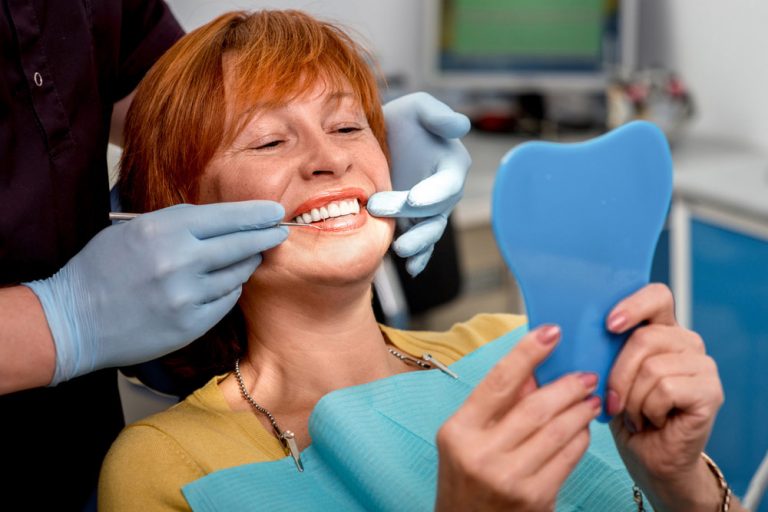Bacteria in plaque and calculus can cause gingivitis, an inflammation of the gums. Gingivitis can be treated successfully by professional cleaning, followed by thorough but gentle flossing and brushing everyday by patients.
If Gingivitis is not treated, It will progress to a disease called periodontitis, can cause serious damage to teeth and the gums, and bone that supports the teeth. Periodontitis can result in the loss of many teeth in some people.
PERIODONTAL DISEASE CAN BE TREATED
Benefits include having:
- A mouth that feels, looks and is healthier
- Teeth that feel smooth and look clean
- A better chance of keeping your teeth for life.
Signs of periodontal disease
- Red, swollen, tender, painful or bleeding gums
- Gums that have shrunk from the teeth
- Persistent bad breath
- A bad taste in the mouth
- Abscesses between teeth and gums
- The fit of a denture has changed
- Loose teeth, drifting apart of teeth, and gaps appearing between teeth.
If you do not understand any of the information, and you think you may have gingivitis or periodontitis, your dentist will be pleased to answer any questions or concerns you may have. The information on this website does not replace advice from your dentist, and does not contain all known facts on this subject. It should be used only in consultation with your dentist. Your dentist may refer you to a periodontist for further treatment. A periodontist is a dentist who specialises in the treatment of gum disease.
Treatment may involve the following:
- Removal of build-ups of plaque and calculus using dental instruments.
- Scaling: the tooth surface is cleaned to remove plaque and calculus from above the gum line, and in shallow pockets below the gum lime. Scaling usually requires one visit.
- Root planing: deposits of plaque and calculus on tooth roots and in deeper pockets beneath the gum line are removed using instruments that leave the root surface clean and smooth. A local anaesthesia may be needed to numb the teeth and gums being treated. Root planing may require several visits for different areas of the mouth to be treated.
- Replacement of fillings: if a filling is contributing to gum disease, it may need to be reshaped or replaced.
- Instruction on how to improve your oral hygiene, including removal of plaque by better brushing and cleaning between the teeth.
- Quit smoking: smoking increase the risk of gum disease and reduces the chances of successful treatment.
SIDE EFFECTS OF TREATMENT
Side effects of periodontal treatment may include the following:
- Pain during scaling and root planing. A local anaesthetic may be needed to help numb the area being cleaned.
- Gum tenderness. An extra sort toothbrush or a mouthwash containing chlorhexidine may be used if regular brushing causes discomfort.
- Tooth sensitivity. Within a week of treatment, any tooth sensitivity usually diminishes (special toothpaste can reduce sensitivity, or your dentist can apply a desensitising varnish.)
- Gum shrinkage, this is more likely to occur if gum tissue are swollen at the start of treatment.
- Increased risk of decay around exposed root surfaces. Your dentist may recommend a daily fluoride mouth rinse to help decrease the risk of decay. There is no guarantee that periodontal treatment will save an affected tooth. Please ask questions, and discuss any concerns with your dentist.
PREVENTING AND CONTROLLING PERIODONTAL DISEASE
To cure periodontal disease or keep it under control:
- Excellent oral hygiene must be maintained daily
- Bleeding from the gums, caused by periodontal disease, must be decreased or stopped
- Plaque and calculus on the teeth roots must be routinely removed.
- Enlarged gum pockets around the teeth must be regularly treated.

